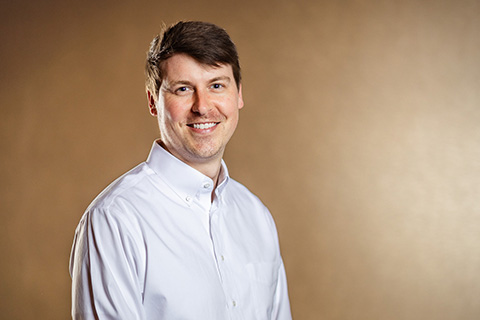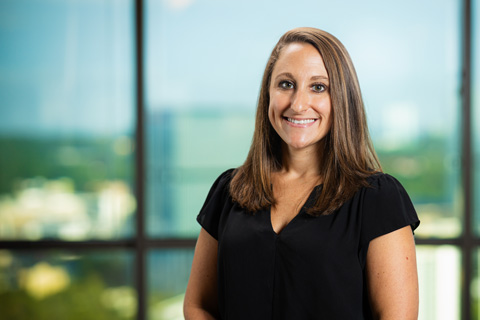Is Your Law Firm Prepared to Comply with the SECURE 2.0 Act? What Firm Administrators and Attorneys Should Know
February 13, 2023
At a glance
- The main takeaway: The SECURE 2.0 Act contains several new provisions that will provide law firms and attorneys with unique tax incentives and make it easier to save for retirement.
- Impact on your business: Many law firms may need to make amendments to current plans or create new plans to comply with the provisions of SECURE 2.0.
- Next steps: Aprio’s Professional Service Advisory team can guide you through the provisions to make sure you fully understand how this will impact your law firm.
Schedule a consultation with an Aprio Professional Service Advisory team member today.
The full story:
Now that the SECURE 2.0 Act has passed, law firms are reviewing their current retirement plans and making amendments or creating new plans to comply with the provisions. While there are many notable provisions and employer incentives within the bill, we will focus on the key provisions that will have a direct impact on law firms and attorneys.
Four key provisions that law firms and firm administrators should know:
- Employers may be eligible to match student loan contributions under a retirement plan for qualified student loan payments. Attorneys, whether fresh out of law school or seasoned professionals, often have considerable student loan debt, and this provision is an exciting benefit for law firms looking to attract new talent and retain employees.
- Increased credit for small employer pension start-ups and new “Starter 401(k) plans” will provide plan administers with more retirement plan options, tax benefits and reduced administrative costs. While most law firms utilize some form of a retirement plan, the passing of SECURE 2.0 will make it easier for plan administers to expand access and help more attorneys prepare for retirement.
- Automatic enrollment in retirement plans for new hires and mandatory annual contribution increases. Plan administers should consider that this provision may result in a higher employer match for employee contributions and should be discussed with new hires during orientation.
- Catch-up contributions for highly compensated employees with wages over $145,000 will soon be subject to Roth treatment in some plans. Since most attorneys are high-earners and take advantage of the catch-up provision, this may result in law firms having to set up a Roth option for employee contributions and employer matching. In addition, all employers will be permitted to designate matching contributions as Roth contributions.
While the SECURE 2.0 Act may result in higher employee participation in retirement plans, it may also require amendments to current retirement plans at existing law firms. As law firms adjust and establish new plans to incorporate the additional options for retirement, employers can receive potential tax savings or reduced administrative costs.
What about attorneys? Here’s four key provisions that will directly impact individuals:
- Tax-free rollovers from 529 plans to a Roth IRA will allow beneficiaries to make up to a $35,000 distribution into a Roth IRA, if certain conditions are met. A 529 plan must have been open for 15 years and is limited to contributions and earnings from at least five years earlier. This provision is also subject to the annual IRA contribution amounts, but not limited on AGI. Attorneys looking to fund their child’s education may find a 529 plan more favorable with new options to convert unused funds.
- The required minimum distribution (RMD) age will increase from the current age of 72 to 73 for those who turned 72 in 2022, and age 75 for those who will turn 74 in 2032. By increasing the RMD age over the next 10 years from 73 to 75, the new law enables taxpayers to delay taking distributions, allowing for longer tax-deferred growth. This will provide attorneys (who often work longer than many other professionals) the option to push out any retirement distributions that are not needed as they are still generating income.
- Catch-up contributions will begin to increase for most individuals to $10,000 starting in 2025. This will provide attorneys with additional retirement savings and tax deductions.
- Penalty-free emergency withdrawals will not be subject to the 10% excise tax limit, $1,000 per year. Taxpayers who take emergency distributions before they reach age 59 ½ are eligible for the penalty-free withdrawal, and will have the option to repay the distribution within three years (no additional distributions are permissible unless the repayment occurs during the three-year period). This provision will provide new attorneys (who are often working through debt and looking to fund retirement) with options for unexpected life events without penalty.
The bottom line
The SECURE 2.0 Act creates new opportunities for law firms to increase savings, reduce administrative costs and make it easier for attorneys to save for retirement. Law firms and attorneys should carefully review these new provisions with their tax and retirement plan advisors.
Aprio’s Professional Service Advisory team can guide you through the provisions to make sure you fully understand how this will impact you and your law firm.
Related Resources/Assets/Aprio.com articles/pages
Recent Articles
About the Author
Jonathan Rudolph
Jon leads Aprio’s Professional Services legal group, specializing in tax advisory and compliance for law firms, service businesses, attorneys, and individuals. With a focus on navigating today’s complex tax environment, he helps clients make informed financial decisions and resolve intricate tax issues. Jon leverages his experience to save clients time and money, reduce tax liabilities, and mitigate compliance risks.
(770) 353-4733
Chelsea Dorfeld
Chelsea specializes in helping her clients minimize their tax liabilities with thorough tax planning year-round. She has extensive experience working with S corporations and partnerships within the professional service world, particularly medical practices and architectural and engineering firms.
(770) 353-2761
Stay informed with Aprio.
Get industry news and leading insights delivered straight to your inbox.


